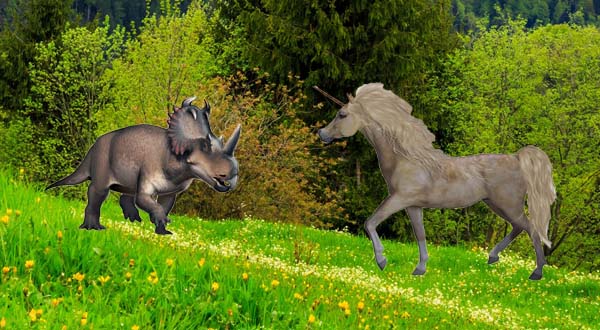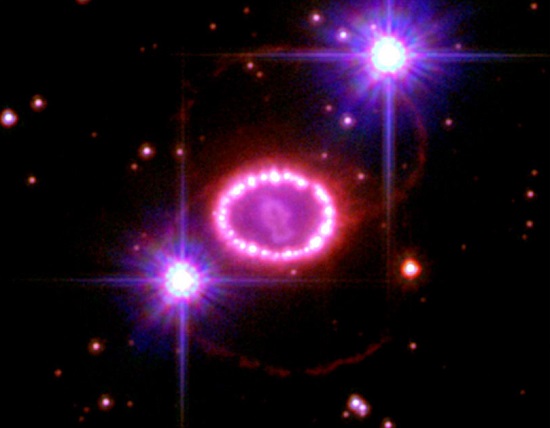My seminary apologetics teacher Dr. William Lane Craig has a quite serious problem on his hands. He’s painted himself into a corner. Dr. Craig has built a career and made and name for himself in apologetics and is well respected in the field. He now faces a problem that could undo all the good work he has done in defending the faith. What problem could possibly be so severe you wonder? Like the man cutting off the branch he’s sitting on, Craig is heading in the direction of undermining most if not all the work he has done in defending the existence of God and the resurrection of Jesus Christ. He appears ready to embrace the creation account as “mytho-historical.” Continue Reading
Is the Bible full of fantastic creatures? Part 3: Cockatrice
The creature sculpted into the fountain above is the mythical cockatrice. It was not included in the below list from one atheist in his attempt to mock the Bible and the Christian faith for including what he considers unbelievable creatures:
“He follows a holy book with a jealous & genocidal god, ghosts, zombies, seers, devils, demons, witches, satyrs, unicorns, talking animals, a man who lived in a fish and a 7 headed dragon.”[1]
Like many atheists he’s grossly wrong in many of his presumptions. And since I’m sure someone with an anti-Bible axe to grind will point to the cockatrice as an unbelievable creature in the Bible I’ve included it. Though not mentioned in this atheist’s list, this is a good place to handle it – following an article on the satyr – because a lot of similar dynamics are involved. Of particular note is the use of Hebrew rhyme – the repetition of a single idea. In Is 34.14 we looked at the use of rhyme when a satyr – an idol for a pagan demonic god represented by a goat – was used in the context of judgment. In contrast here we see Hebrew rhyme used with the word the KJV translates as “cockatrice” in the context of the glorious reign of Christ on earth, in a passage about the effects of the curse being removed.
So what’s going on here? Is the Bible really referring to the mythical beast, a winged serpent with a rooster’s head and deadly gaze, hatched from a cock’s egg? Or is something else going on? With a little history and some good dictionaries, it’s easy to see both the intent of the word (a poisonous viper such as an asp or Egyptian cobra), and a likely reason why those more common words weren’t used. Continue Reading
Is the Bible full of fantastic creatures? Part 2: Satyrs, devils and demons

We continue now into our investigation of a claim made by an atheist who charges that the Bible is full of what he considers unbelievable natural and supernatural characters and creatures:
“He follows a holy book with a jealous & genocidal god, ghosts, zombies, seers, devils, demons, witches, satyrs, unicorns, talking animals, a man who lived in a fish and a 7 headed dragon.”[1]
In my previous article I dealt with unicorns and his misunderstanding of God as a “jealous & genocidal god.” Now we move onto satyrs – and as it turns out devils and demons fit in here too, so we’ll cover them instead of Jonah as I indicated in the previous article. Continue Reading
Is the Shroud of Turin Authentic? The Unconsidered Evidence
|
Summary |
||
| In their article “Is the Shroud of Turin Authentic – or Is it a Forgery” Creation Ministries International (CMI) supports the theory that the Shroud of Turin is not the authentic burial shroud of Christ – it is a medieval forgery. This article refutes that theory, along with the main reasons CMI gives for rejecting authenticity.
This article relies primarily on the testimony of Shroud of Turin Research Project (STRP) members and other expert testimony to demonstrate there is a wealth of evidence CMI apparently did not consider before drawing their conclusions. This article is intended to inform the reader of those evidences and make available the testimony of the STRP members and other expert witnesses so that readers may judge for themselves whether CMI has reached the correct conclusion. It is the position of this article that they did not. The reader is encouraged to click on the links to view the referenced testimonies. |
Are Unicorns In The Bible?

Sidebar to: Is the Bible full of fantastic creatures? Part 1: Jealous God and Unicorns?
First of all, let’s dispense with the idea that the Bible speaks of the mythical magical type of unicorns pictured above – the type that most people think about when they hear the word “unicorn”. In fact the word “unicorn”- as it is understood today, is so far removed from the meaning of the original Hebrew word ראם (reh-ahm) that modern translations have chosen to not even use the word, preferring instead “wild ox.” Some translations using “wild ox”: NIV, ESV, NKJV, NASB, NRSV among others. That’s appropriate since 1. “wild ox” is the primary meaning given in the standard reference – BDB[1] and 2. Its a word that could refer to what many commentators conclude the Hebrew word points to – the aurochs – a wild ox now extinct. The problem with that understanding is that all the wild oxen we’re familiar with have two horns. Which gets back to the main question I want to examine:
Does the Bible Really Refer to a Unicorn?
Is the Bible full of fantastic creatures? Part 1: Jealous God and Unicorns?

An atheist on twitter was frustrated that I was following my own advice about not providing evidence to mockers.[1] So in his frustration he did what mockers do: engaged in ridicule and mocking. In an attempt to deride and ridicule the faith he proceeded to tell others what he thinks I believe:
“He follows a holy book with a jealous & genocidal god, ghosts, zombies, seers, devils, demons, witches, satyrs, unicorns, talking animals, a man who lived in a fish and a 7 headed dragon.”[2]
Clearly he takes exception to all of these. But since he is an atheist, that neither surprises, nor concerns me. The question I do want to address however is what are we believers and people who are seeking the truth to think about what many would consider mythical creatures in the list? With that in mind let’s look at what the Bible has to say about each of these items, plus one that is usually questioned, but not in his list: a talking snake. So let’s look at these one by one in the light of what the holy book – the Bible – says about them. But before I start, let me highlight the main problem: Continue Reading
Are young earth evidences needed to defend Christian Faith?
10 Young earth evidences and why they’re needed
Does the age of the earth matter to your faith? The witnessing approach known as Evangelism Explosion was known for its diagnostic questions[1], so let me take that approach and ask a few diagnostic questions. Answer yes or no to the following:
Question 1: Does the account of the creation of the universe as presented in Genesis depict literal events in a historical manner the way the gospels present the life of Jesus in a historical manner?
Question 2: Is it important to stand up for a “literal” understanding of the creation of the universe as depicted in Genesis the way we stand up for a “literal” understanding of the death and resurrection of Jesus?
Question 3: Are you as proud and willing to stand for and defend the doctrine of creation as depicted in Genesis – in 6 days – as you are to stand for and defend the resurrection of Jesus on the third day?
Will the Church Equip to Fight the Spiritual Culture War?

In an article titled How You Can Equip to Fight The Spiritual Culture War, an author I have a lot or respect for – Tom Gilson – has some advice for the church. Not only do I have a lot of respect for Tom, but I also like his mission. In another article he states he’s “leading another project specifically geared toward building churches’ spiritual readiness.” Tom is usually right on the money, but he does have a blind spot or two, which is why I chime in on his articles – in hopes that in being a bit of a gadfly like Erasmus, I might nudge him in the right direction.
So back to the topic at hand – which is a prediction meant to motivate people as did Jonah’s preaching of – “Forty more days and Nineveh will be overturned.” (Jon 3.4) motivated the Ninevites. Tom is trying to motivate God’s people – Christians – to prepare to deal with the inevitable increasing hostilities we will face as American culture becomes increasingly bold in manifesting its rejection of God’s intent and design for gender and sexuality. Tom’s recommendation: be willing to make two sacrifices: Continue Reading
Distant Starlight – Under Occam’s Razor – Part 2: Critique and Cuts
As noted in part 1 of this article, distant starlight has been called the best argument against biblical creation and a young earth. A serious charge. So I thought it would be helpful to identify the best answer to this “best” charge against creation. A number of solutions to this problem have been offered by scientists who happen to also be creationists. We briefly examined the popular ones in the previous article. Now that we’ve completed an overview of possible solutions, we’ll get to the meat of the matter: identifying which theory or theories both have a possibility of working, and surviving the principle of Occam’s razor. So without further ado: Continue Reading
Distant Starlight – Under Occam’s Razor – Part 1: Contenders
Distant starlight: It’s been called the best argument against biblical creation and a young universe.[1] Why is that? Because Big Bang Theorists, secularists and anyone who believes in an ancient universe believe they have an iron clad case against a young universe with regard to distant starlight. The argument goes like this.
The Problem
We can see stars hundreds of thousands, millions even billions of light years away. Take the Andromeda galaxy – 2.5 million light years away. A supernova was observed in that galaxy. That implies the light took 2.5 million years to get to earth. But if the earth (and indeed the entire universe) is only 6,000 years old. How can we see Andromeda or the supernova? Using standard understandings and formulas, there hasn’t been enough time for the light to get here from Andromeda. Yet we can see it. On the face of it that suggests that the earth is at least 2.5 million years old – much older than the 6,000 years that Biblical creationists claim for the universe. And the problem only gets worse for more distant stars. This is indeed an acknowledged problem. Continue Reading






